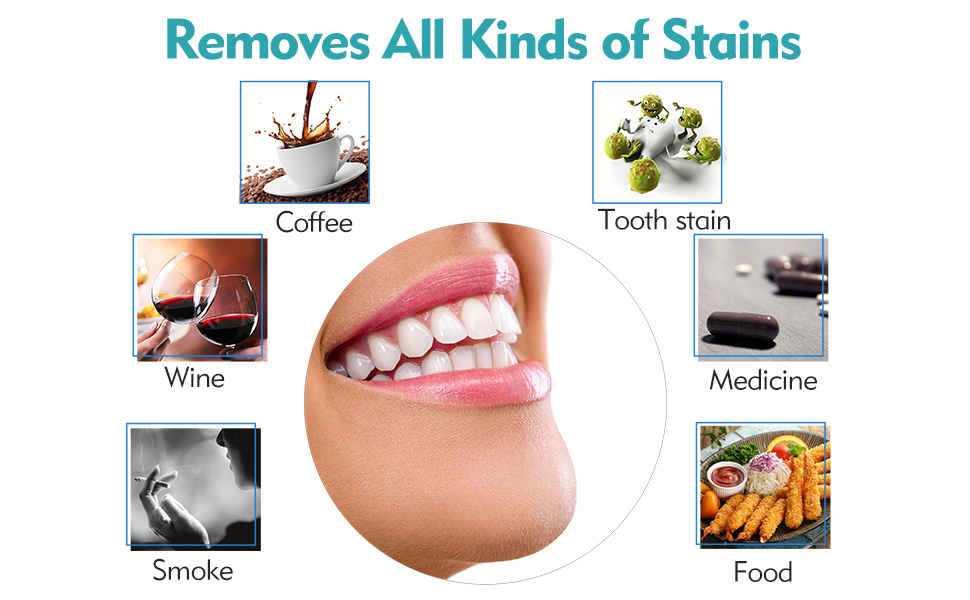Teeth whitening are a popular cosmetic procedure that involves removing stains and discoloration from the teeth, resulting in a brighter and more attractive smile.
Over the years, various methods have been developed to achieve this goal, including the use of blue LED light.
The blue LED light is claimed to enhance the effects of teeth whitening by accelerating the breakdown of peroxide and other whitening agents, resulting in faster and more effective results.
However, there is some debate as to whether the blue LED light is actually necessary for achieving the desired results.

Is The Blue LED Light Necessary For Teeth Whitening?
The necessity of the blue LED light in teeth whitening is a subject of debate. While some argue that the blue LED light is essential for achieving optimal results, others claim that it is not necessary and that other teeth whitening methods can be just as effective.
To understand the role of blue LED light in teeth whitening, it is important to first understand the science behind teeth discoloration and the mechanisms of teeth whitening.
Teeth can become discolored due to various factors, including aging, smoking, and consumption of certain foods and drinks.
The discoloration occurs when chromogens, or pigment molecules, accumulate on the tooth surface and penetrate into the enamel.
Teeth whitening works by using peroxide or other whitening agents to break down the chromogens and remove the discoloration.
The blue LED light is used in conjunction with these agents to accelerate the chemical reaction and enhance the whitening process.
Proponents of blue LED light argue that it is necessary for teeth whitening because it stimulates the breakdown of peroxide and other whitening agents, resulting in faster and more effective results.
They also claim that the blue LED light can penetrate deeper into the enamel and target more stubborn stains that cannot be removed by whitening agents alone.
However, some studies have suggested that the use of blue LED light does not significantly improve the effectiveness of teeth whitening.
Moreover, some dentists have raised concerns about the safety of blue LED light teeth whitening, as it can cause tooth sensitivity and damage to the enamel if not used properly. Some experts also argue that other teeth whitening methods, such as custom-fit trays and laser whitening, can be just as effective as blue LED light teeth whitening.
While the blue LED light can enhance the effectiveness of teeth whitening and provide faster results, it is not necessary for achieving optimal results.
Alternative teeth whitening methods can be just as effective and may even be safer. Ultimately, the choice of teeth whitening method should be made based on individual preferences and the advice of a dental professional.

The Role Of Blue LED Light In Teeth Whitening
The blue LED light is typically used during in-office teeth whitening procedures, where a high concentration of whitening agent is applied to the teeth and then activated by the light.
The light is often positioned close to the teeth for 15-30 minutes during the whitening session, with some procedures using multiple cycles of this process.
The claimed benefits of the blue LED light in teeth whitening include:
Faster results: The blue LED light is said to accelerate the chemical reaction between the whitening agent and the chromogens, resulting in faster and more effective results.
Deeper penetration: The blue light is claimed to penetrate deeper into the enamel, targeting more stubborn stains and providing more thorough whitening.
Longer-lasting results: Some studies have suggested that the use of blue LED light can improve the longevity of teeth whitening results, potentially by increasing the effectiveness of the whitening agent.
However, the scientific evidence behind these claims is mixed. While some studies have found that the use of blue LED light can enhance the effectiveness of teeth whitening, others have found no significant difference in results with or without the light.
Moreover, some dental professionals have raised concerns about the safety of blue LED light teeth whitening.
Excessive exposure to the blue light can cause tooth sensitivity and damage to the enamel, and some experts suggest that alternative teeth whitening methods, such as custom-fit trays and laser whitening, may be safer and just as effective.
Overall, the role of blue LED light in teeth whitening remains a subject of debate. While the light may provide some benefits in terms of faster and deeper whitening, it may not be necessary for achieving optimal results.
Dental professionals should evaluate each patient’s individual needs and preferences when deciding on a teeth whitening method.
Risks And Side Effects Of Blue LED Light Teeth Whitening
While blue LED light teeth whitening are generally considered safe, there are potential risks and side effects associated with the procedure. These risks and side effects can include:
Tooth Sensitivity: One of the most common side effects of blue LED light teeth whitening is tooth sensitivity.
This sensitivity can occur during the whitening process and may persist for several days afterwards. This sensitivity occurs due to the activation of nerve endings in the teeth by the light.
Gum Irritation: The whitening agents used in conjunction with the blue LED light can sometimes cause irritation to the gums and surrounding soft tissues. This irritation can range from mild discomfort to more severe inflammation.
Enamel Damage: While rare, excessive exposure to blue LED light can damage the enamel, resulting in weakened or brittle teeth.
This damage can occur if the whitening agents are not properly applied or if the light is used for too long or at too high of an intensity.
Uneven Whitening: If the whitening agent is not evenly applied to the teeth or if the light is not positioned properly, there is a risk of uneven whitening. This can result in some areas of the teeth being whiter than others, which can be aesthetically displeasing.
Increased Tooth Decay: Teeth that have been whitened with blue LED light may be more susceptible to decay, as the whitening process can weaken the enamel and make it more susceptible to bacteria and acid erosion.
Overall, while the risks and side effects associated with blue LED light teeth whitening are relatively low, they do exist and should be taken into consideration before undergoing the procedure.
Dental professionals should ensure that patients are aware of the potential risks and side effects and take appropriate steps to minimize them, such as using lower concentrations of whitening agents and monitoring the patient closely during the procedure.
The ZL-PRT03 Teeth Whitening Accelerator Light
The ZL-PRT03 Teeth Whitening Accelerator Light is a device that uses blue LED light to enhance the teeth whitening process.
According to the product description, the device is 16x more powerful than other blue LED lights and can be connected to iPhones, Micro-USB Androids, and USB ports for home use.
The device comes with a mouth tray that is designed to fit comfortably over the teeth and deliver the whitening agents to the surface of the teeth.
The blue LED light is then used to activate the whitening agents and enhance the effectiveness of the whitening process.
While the product may claim to enhance the effectiveness of teeth whitening, it is important to note that the scientific evidence behind the benefits of blue LED light in teeth whitening is mixed.
Additionally, there are potential risks and side effects associated with the use of teeth whitening products, including tooth sensitivity, gum irritation, and enamel damage.
It is recommended to consult with a dental professional before using any teeth whitening product, including the ZL-PRT03 Teeth Whitening Accelerator Light.
A dental professional can evaluate the individual’s oral health and provide guidance on the best and safest teeth whitening method for their needs.
Here is the product link: https://www.sinjee.net/zl-301-teeth-whitening-accelerator-light-16x-more-powerful-blue-led-light-mouth-tray-teeth-whitening-enhancer-light-trays-connected-with-iphone-micro-usb-android-usb-for-home-use-product/
Why To Use ZL-PRT03 Teeth Whitening Accelerator Light
The ZL-PRT03 Teeth Whitening Accelerator Light is advertised as a more powerful and convenient way to enhance the teeth whitening process. Here are some potential reasons why one might choose to use this device:
Faster Results: The device is claimed to be 16x more powerful than other blue LED lights, which can potentially lead to faster and more effective teeth whitening results.
Convenient Home Use: The device can be connected to iPhones, Micro-USB Androids, and USB ports, allowing for convenient home use without the need for an in-office visit.
Enhanced Whitening: The blue LED light is designed to activate the whitening agents and enhance the effectiveness of the whitening process, potentially resulting in a brighter and more uniform smile.
However, it is important to note that while the device may claim to enhance the effectiveness of teeth whitening, the scientific evidence behind the benefits of blue LED light in teeth whitening is mixed.
Additionally, there are potential risks and side effects associated with the use of teeth whitening products.
Conclusion
The use of blue LED light in teeth whitening is a subject of debate in the dental community. While the blue LED light is claimed to enhance the effectiveness of teeth whitening and provide faster results, the scientific evidence behind these claims is mixed.
Moreover, there are potential risks and side effects associated with the use of blue LED light teeth whitening, including tooth sensitivity, gum irritation, and enamel damage.
While products such as the ZL-PRT03 Teeth Whitening Accelerator Light may offer more powerful and convenient options for enhancing teeth whitening, it is important to consult with a dental professional before using any teeth whitening product.
A dental professional can evaluate the individual’s oral health and provide guidance on the best and safest teeth whitening method for their needs.
Overall, achieving optimal results with teeth whitening depends on a variety of factors, including the individual’s oral health, the type and concentration of whitening agents used, and the method of application.
It is important to approach teeth whitening with caution and to prioritize the safety and health of the teeth and gums.
Post time: May-02-2023

